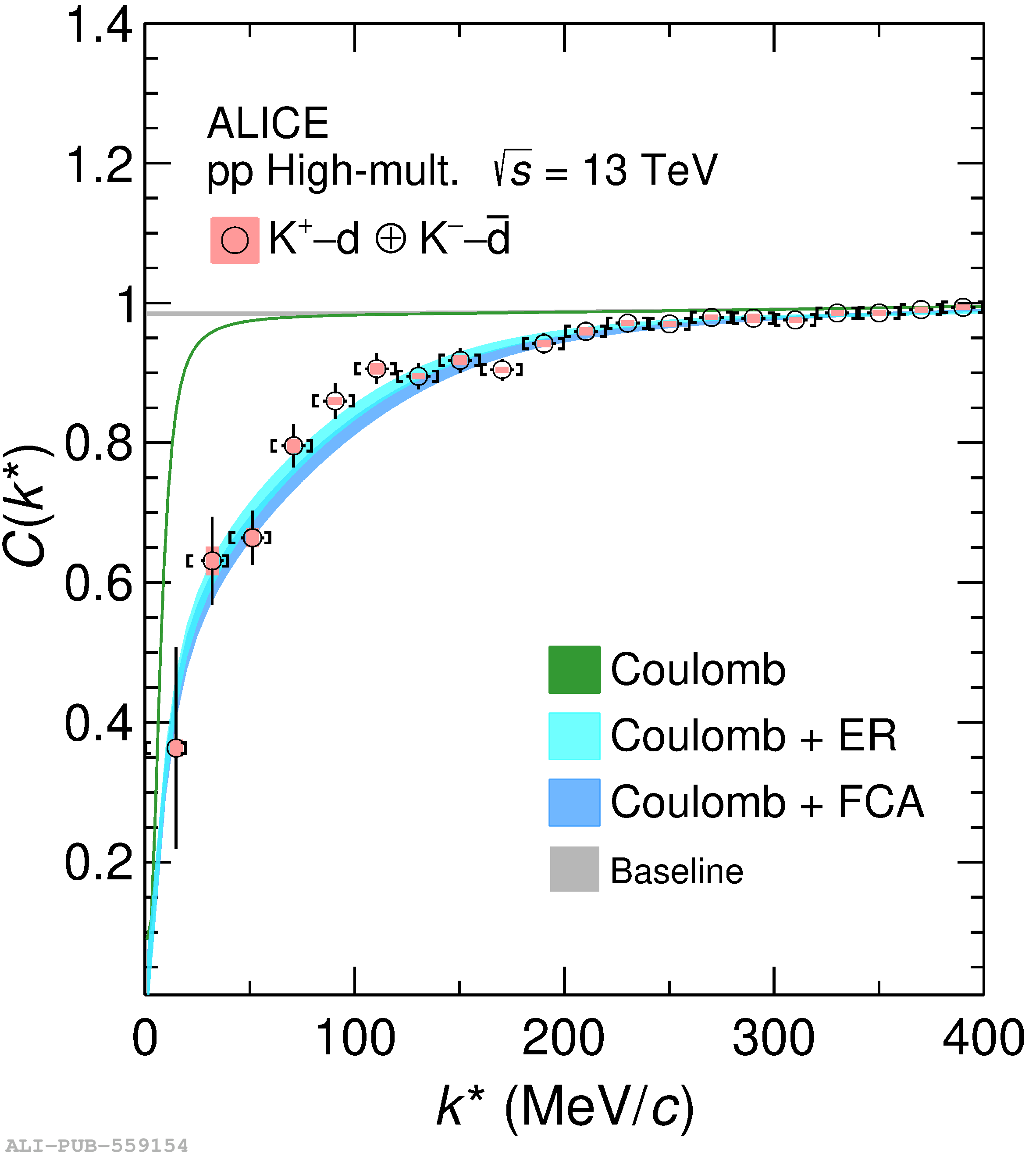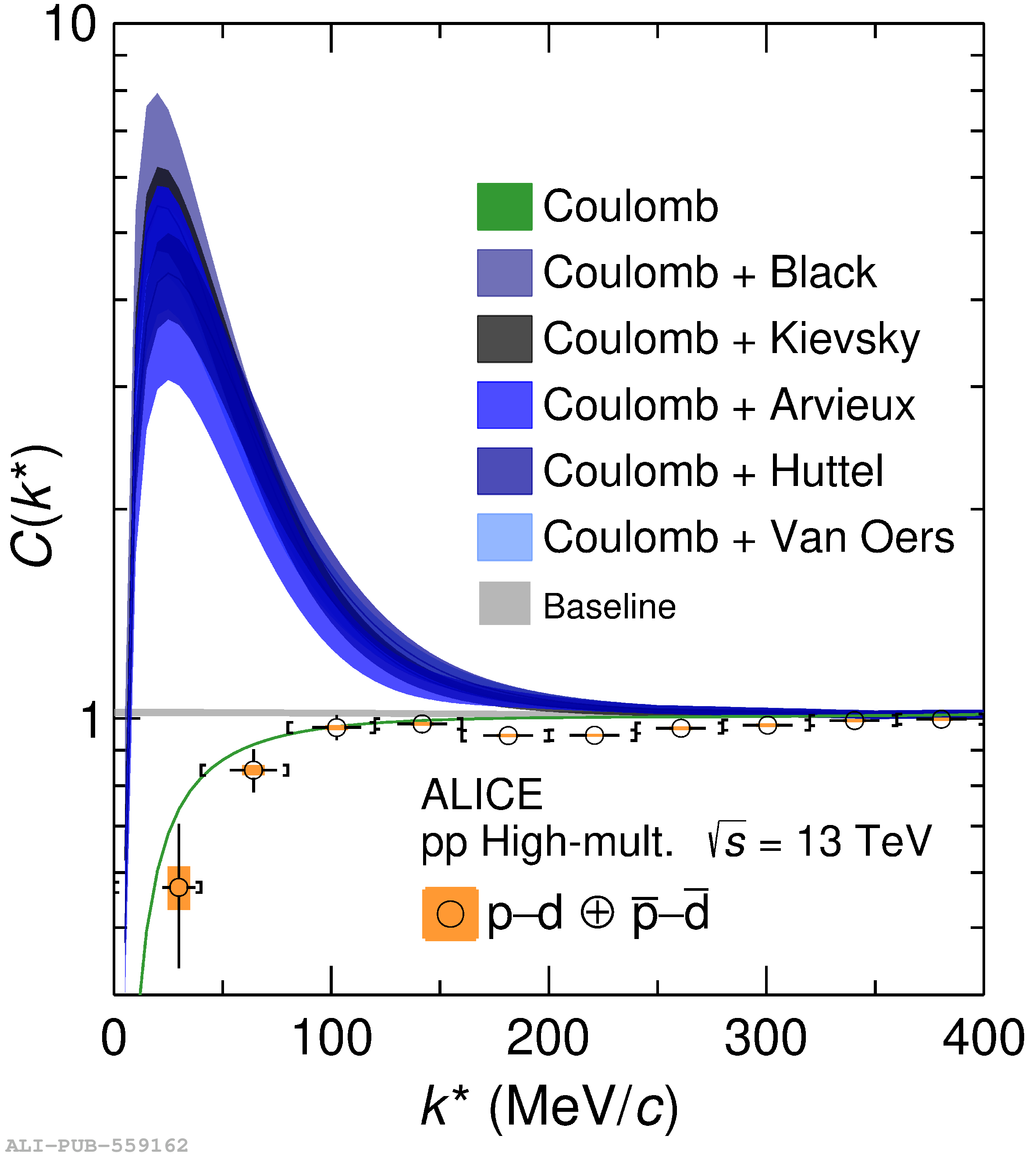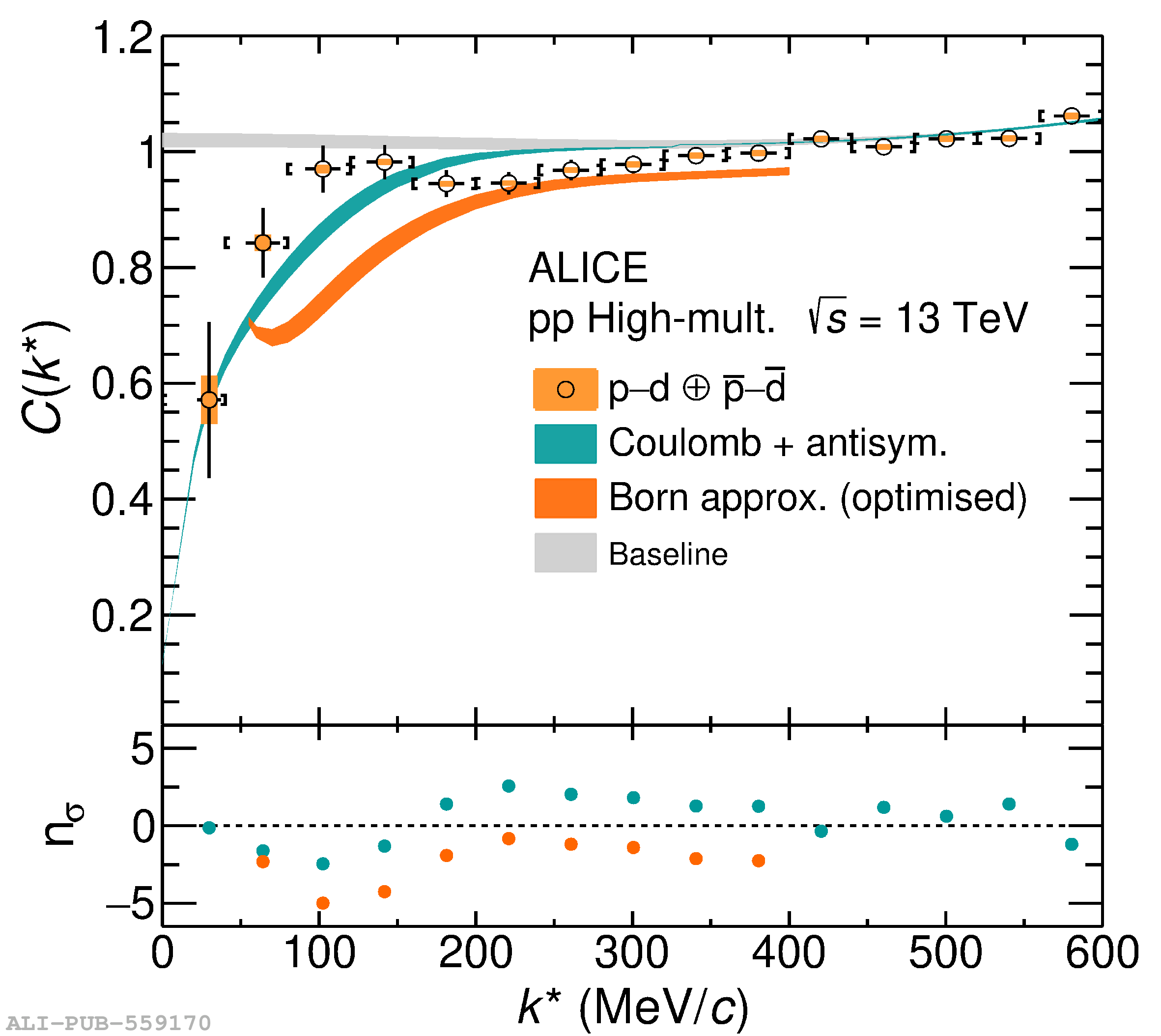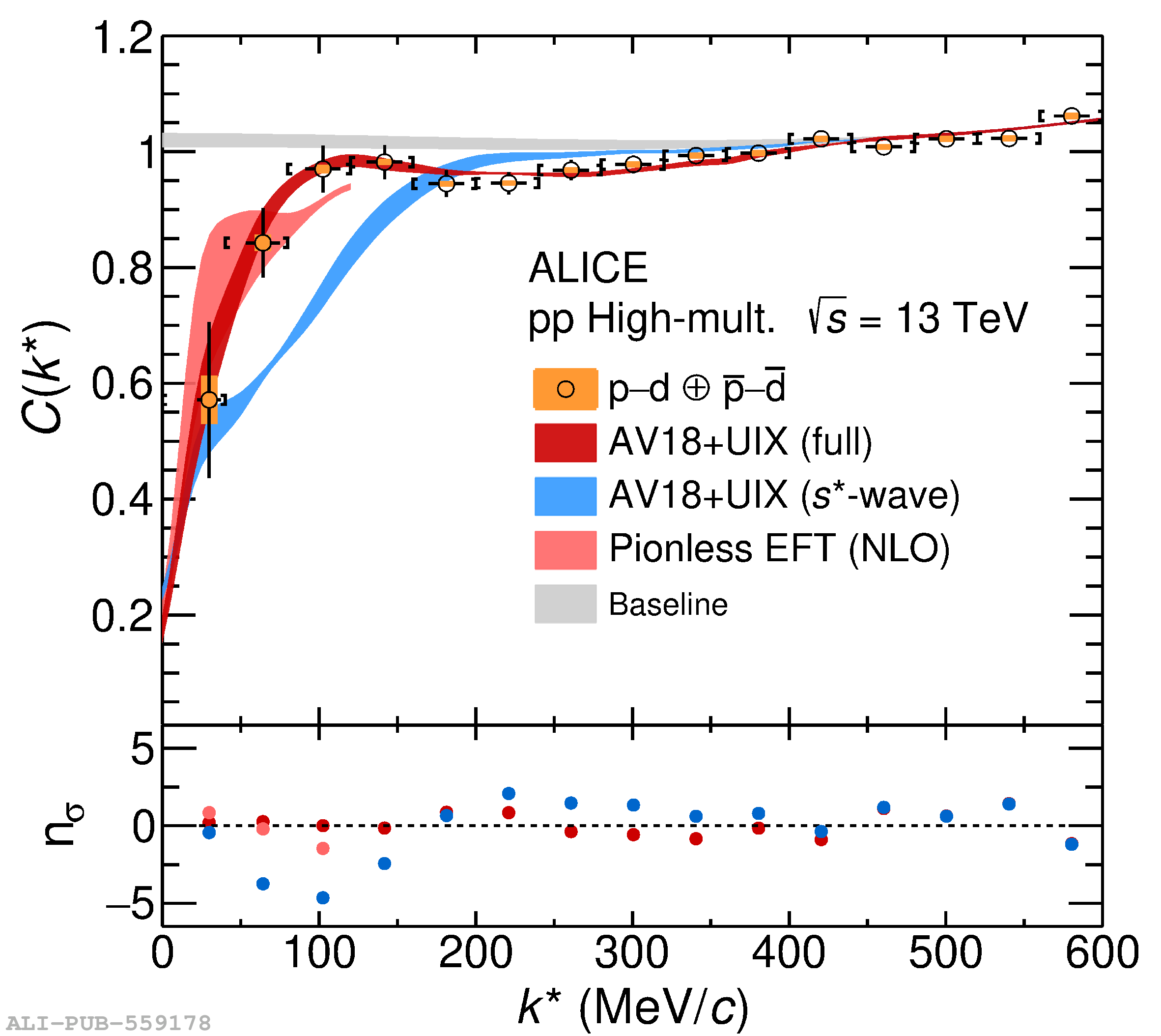Deuterons are atomic nuclei composed of a neutron and a proton held together by the strong interaction. Unbound ensembles composed of a deuteron and a third nucleon have been investigated in the past using scattering experiments and they constitute a fundamental reference in nuclear physics to constrain nuclear interactions and the properties of nuclei. In this work, K$^{+}-$d and p$-$d femtoscopic correlations measured by the ALICE Collaboration in proton$-$proton (pp) collisions at $\sqrt{s}=13$ TeV at the Large Hadron Collider (LHC) are presented. It is demonstrated that correlations in momentum space between deuterons and kaons or protons allow us to study three-hadron systems at distances comparable with the proton radius. The analysis of the K$^{+}-$d correlation shows that the relative distances at which deuterons and protons or kaons are produced are around 2 fm. The analysis of the p$-$d correlation shows that only a full three-body calculation that accounts for the internal structure of the deuteron can explain the data. In particular, the sensitivity of the observable to the short-range part of the interaction is demonstrated. These results indicate that correlations involving light nuclei in pp collisions at the LHC will also provide access to any three-body systems in the strange and charm sectors.
Phys. Rev. X 14, 031051 (2024)
HEP Data
e-Print: arXiv:2308.16120 | PDF | inSPIRE
CERN-EP-2023-181
Figure group








